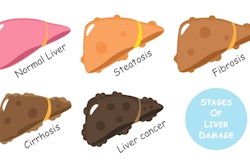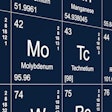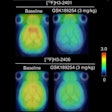Evaluating increased rib uptake on F-18 DCFPyL PET/CT in prostate cancer patients may be challenging -- and it can even lead to false positives, according to findings presented in a Cum Laude award-winning online poster presented during the 2025 ARRS annual meeting.
A team led by Aisha Alam, DO, of the Icahn School of Medicine at Mount Sinai in New York City performed a retrospective review of patients with prostate cancer who underwent PET/CT scans with radiotracer F-18 DCFPyL at a single academic center from June 2021 to April 2024. Through an electronic health record search, the group identified patients with increased radiotracer rib uptake.
“In patients without osseous metastasis, the uptake is often low (less than the mean liver SUV), stable, and likely represents benign etiologies, such as fibrous dysplasia, fibrous cortical defect, traumatic fractures, and hemangiomas," Alam said in an ARRS statement. "Thus, further evaluation is usually not required."
Excluding patients with imaged evidence of osseous metastasis at other sites or with CT that suggested alternate diagnoses, the team analyzed Gleason scores, most recent serum PSA levels, maximum standardized uptake values (SUVmax) in the rib foci, and mean liver SUV.
The researchers performed follow-up evaluation to confirm benignity, including stability on F-18 DCFPyL PET/CT and/or imaging such as CT, bone scan, or MRI.
They used 204 total F-18 DCFPyL PET/CT scans with either solitary or multiple foci of increased rib uptake without CT correlation and imaging evidence of osseous metastatic disease. The mean patient age was 68 years, mean Gleason score was 7, mean PSA was 7.9 ng/mL, mean SUVmax for rib uptake was 3.8, and mean liver SUV was 5.7.
“Of the 204 scans, 31 studies belonged to 13 patients who underwent follow-up F-18 DCFPyL PET/CT for restaging," Alam said in the statement.
For patients with redemonstrated rib uptake, mean SUVmax was 3.5; mean SUVmax percent change on subsequent scans was 15.1%. For patients with multiple PET/CT scans, the SUVmax for each foci of rib uptake was less than the mean liver SUV (mean, 6.1). Of the 23 single-scan PET/CT patients who had a rib uptake greater than the liver mean, 14 had a PSA less than 10 ng/mL.
Larger studies using similar findings with histologic correlation and follow-up imaging would be needed to improve diagnostic certainty, Alam concluded.




















